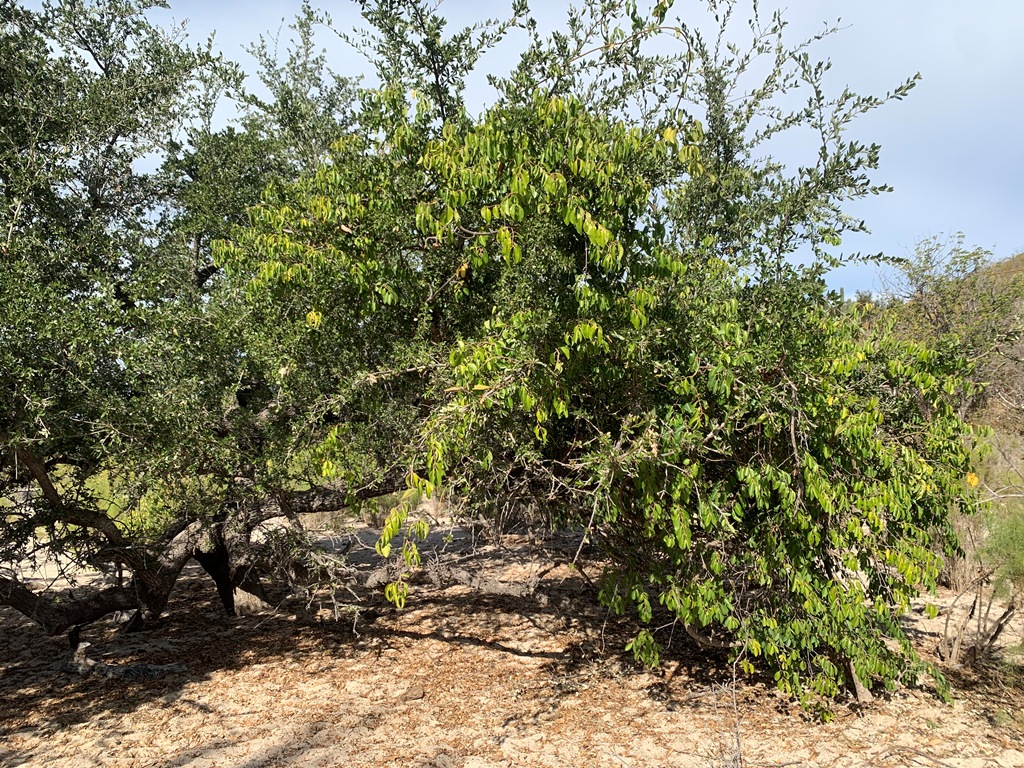You are here
Home » Targeted Removal of an Invasive, Weedy Vine (Cryptostegia grandiflora) from Critical Habitat of Quercus brandegeei, an Endangered Mexican Oak

Executive Summary: Quercus brandegeei, or the arroyo oak, is endangered, consisting of less than 1500 total trees all of which occur only in the southernmost portion of Baja California Sur, Mexico. As one of the only large trees in the region, this oak is highly valued by the local people both culturally and as a source of food for people and livestock. The oak also provides valuable ecosystem services including stabilizing soil in arroyos, regularly flooded ephemeral streams, and supporting diverse wildlife. However, this oak is in critical danger of extinction, with local experts believing the species has not successfully established new, young individuals for the last 100 years. As such, since 2018 the arroyo oak has been the target of a conservation project involving a team of scientists from Mexico and the United States as well as local conservationists known as “Salvemos al Encino Arroyero” (Save the Arroyo Oak). We, the Salvemos team, have surveyed and monitored populations of the arroyo oak for years, resulting in the identification of a major threat to this oak and the arroyo ecosystems: the rubber vine (Cryptostegia grandiflora). This vigorous, climbing vine was introduced as an ornamental plant in Baja California Sur in the 1930s. Rubber vine has become increasingly problematic in the region due to its ability to grow and spread rapidly, stealing water and sunlight from native plant species, and killing them. We have identified significant rubber vine invasions at 3 of the 18 known populations of the arroyo oak. At one of these populations, La Cobriza, we estimate that rubber vine is covering at least 60% of the arroyo oak trees, has severely damaged more than 10 trees, and has caused the death of at least one tree. Rubber vine is very challenging to mechanically remove once it has invaded an area because it is very woody, and its sap is toxic to humans. Additionally, it is capable of re-rooting itself from cut stems, meaning that after being cut down, it must be physically removed from the invaded area and then burned. To preserve arroyo ecosystems and the arroyo oak, the best management option is mechanical removal via chopping, removing, and burning of the rubber vine rather than herbicide treatments. While mechanical removal is intense and costly, it has been successful before. More than 10 years after mechanical removal of rubber vine from another arroyo oak population, it has only just begun very minimal re-growth in the area. We, the Salvemos team, propose to completely remove this vine from the La Cobriza arroyo. We will do this with a team of 10 local ranchers, in partnership with a local governmental organization, CIBNOR, and a non-profit organization specializing in invasive species management, MAZATL. We will pay all ranchers to work full-time removing this vine for one month each year for two years, which should achieve full eradication. We will continue monitoring this population every year for the foreseeable future and will alert MAZATL and CIBNOR if rubber vine begins to re-invade this arroyo.
Target Species:
Quercus brandegeei (EN)